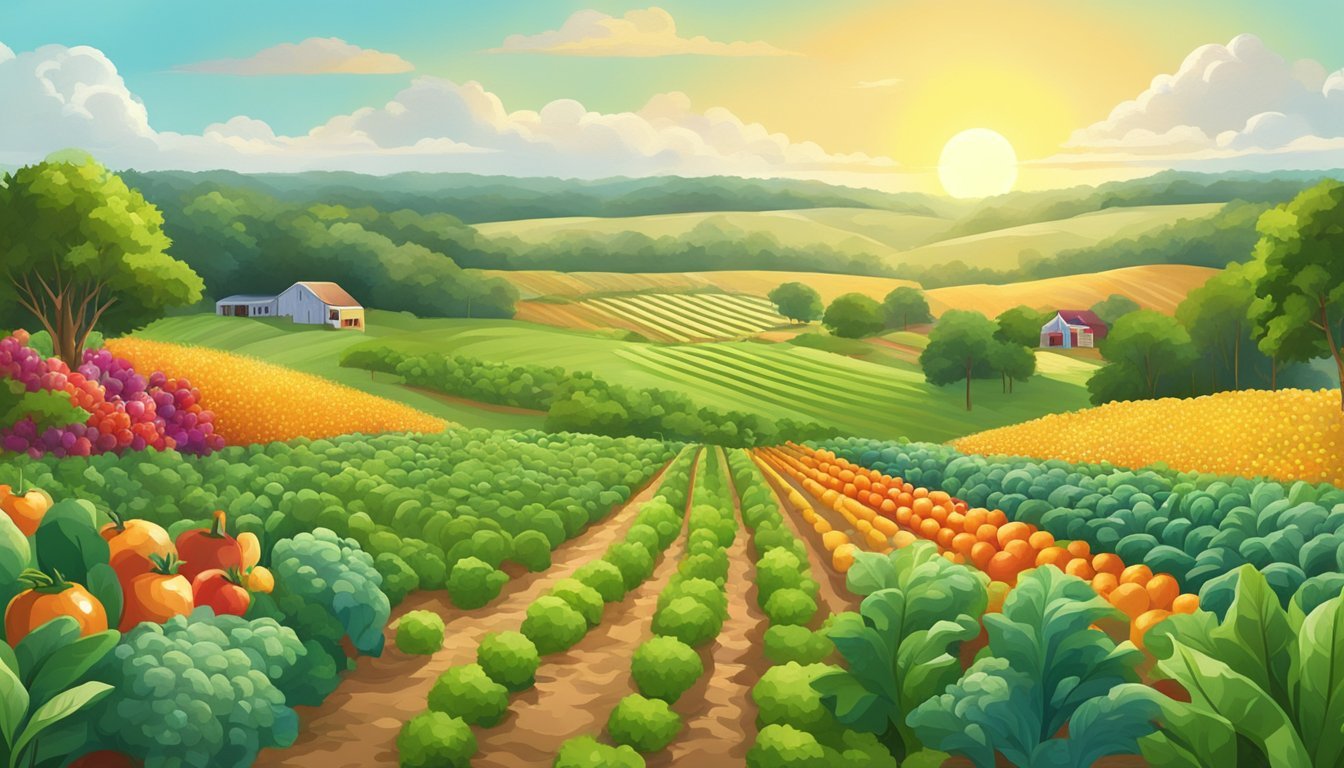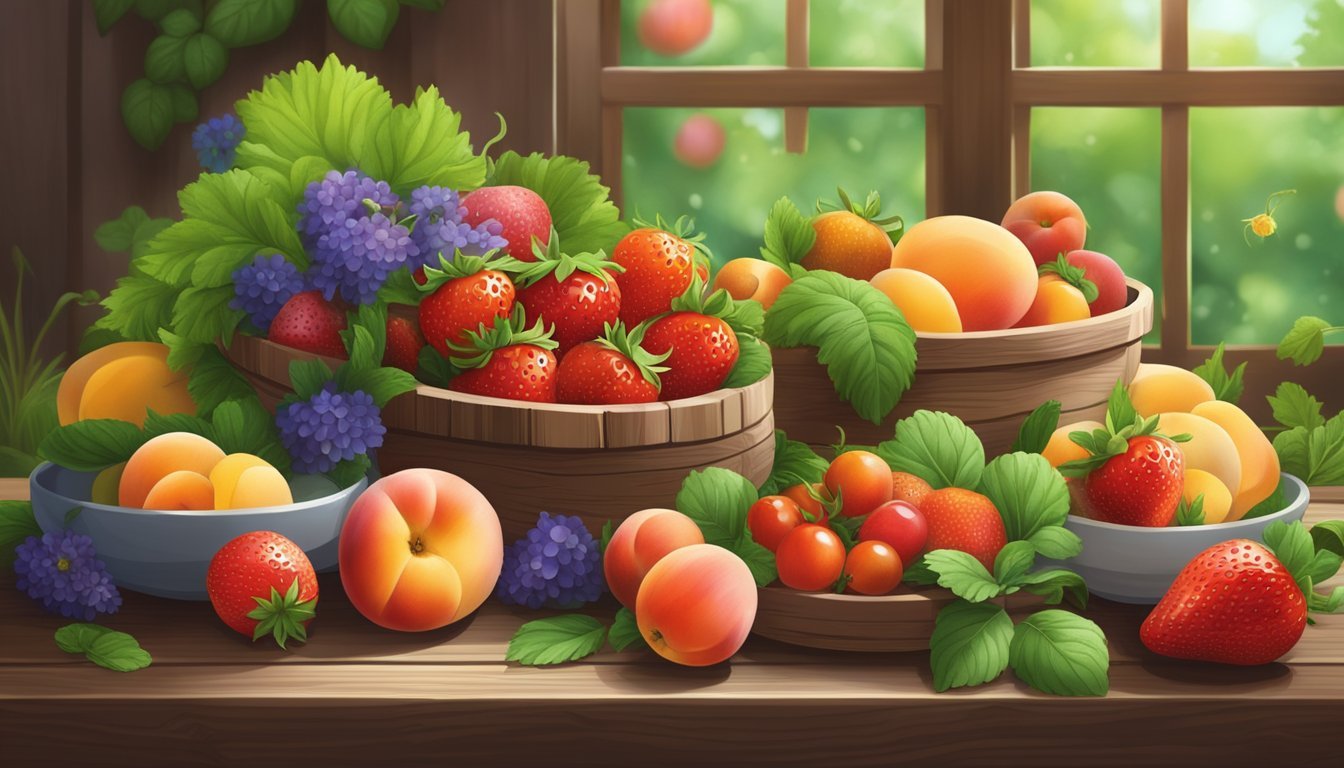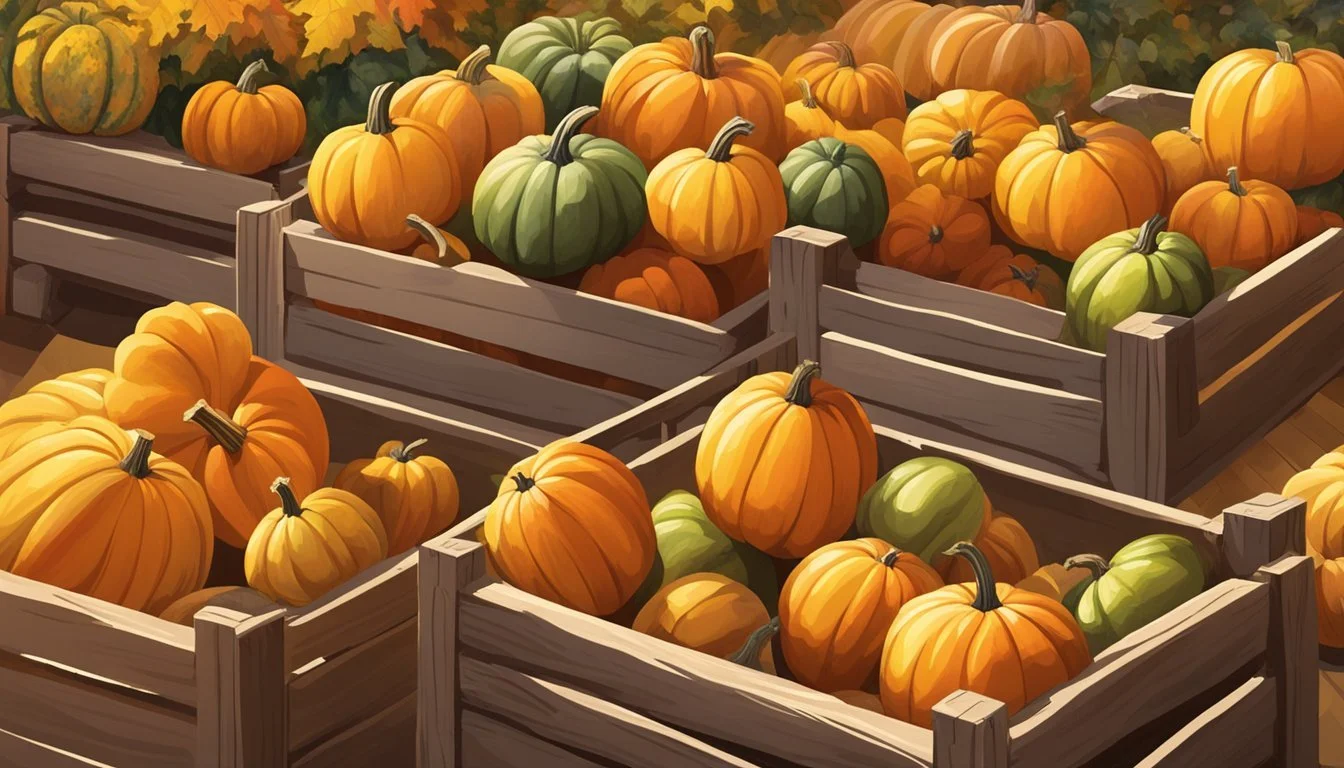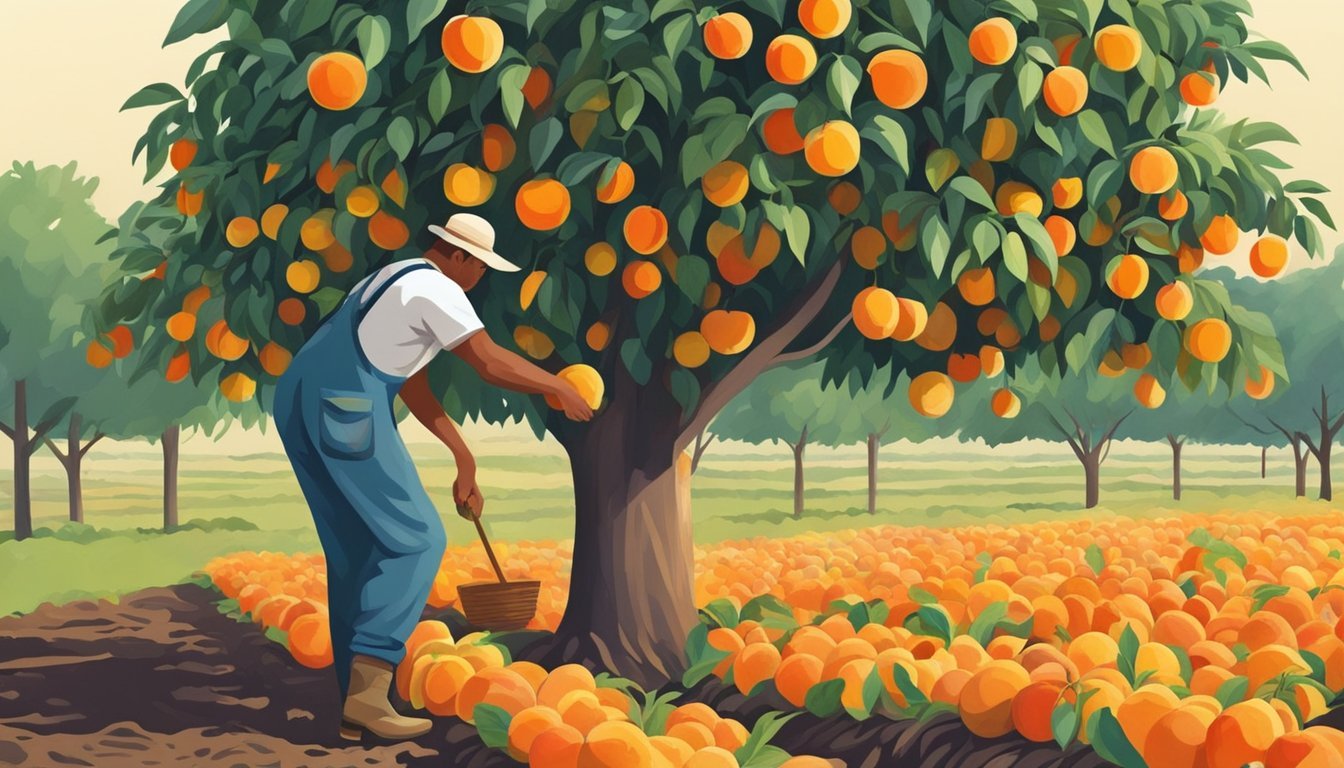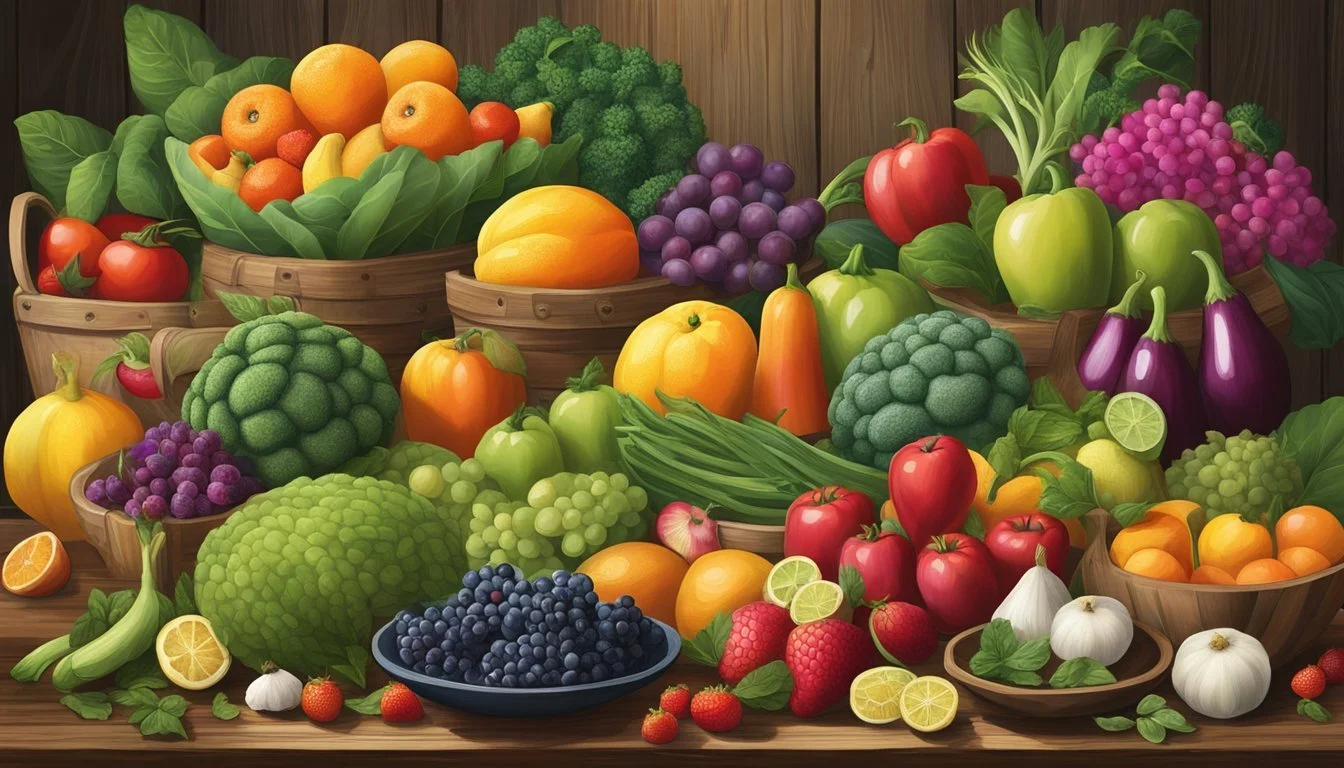South Carolina Seasonal Fruit & Veg Guide
Your Year-Round Companion
South Carolina's diverse climate and fertile soils offer a wide variety of fruits and vegetables that change with the seasons. Understanding when produce is at its peak is crucial for anyone interested in farm-to-table dining, as it ensures the freshest and most flavorful ingredients. Seasonal eating not only supports local farmers and the economy but also provides environmental benefits by reducing transportation emissions and packaging waste.
The farm-to-table movement is particularly vibrant in South Carolina, where farmers markets, local restaurants, and even home cooks celebrate the state's agricultural bounty. A seasonal guide becomes an indispensable tool for these food enthusiasts. In the spring, one may find an abundance of strawberries and asparagus (how long does asparagus last?), transitioning into juicy peaches and crisp cucumbers come summer. The fall brings sweet potatoes and apples, while winter offers hearty greens and root vegetables.
This seasonal rhythm is central to South Carolina's culinary identity. Chefs across the state curate their menus based on the seasonal availability of ingredients, ensuring a fresh and dynamic dining experience. Consumers who follow a seasonal guide are not only indulging in the best-tasting produce but also participating in a sustainable food culture that looks to preserve South Carolina's natural resources and culinary heritage.
What’s in Season in South Carolina Right Now?
Understanding South Carolina's Climate and Harvest Seasons
South Carolina's climate allows for a year-round growing season with varying harvest times across the state. Its mild winters and warm summers influence what produce is grown and when it can be harvested.
Climate Influence on Produce
The climate in South Carolina is primarily humid subtropical, characterized by hot summers and mild winters. This climate is conducive to growing a broad range of fruits and vegetables. Seasonal weather patterns, such as increased rainfall or temperature shifts, can impact the growth and quality of produce. For instance, warmer summers often call for increased irrigation to support germination and growth.
Key Harvest Times by Season
South Carolina's harvest times can be divided by seasons, with each yielding different crops:
Spring:
Strawberries typically begin in April.
Snap peas and various greens come into season.
Summer:
Peaches are abundant and at their peak from June to August.
Tomatoes, cucumbers, and melons thrive in the hot months.
Fall:
Apples are best from September to November.
Fall greens, pumpkins, and sweet potatoes are harvested.
Winter:
Greens like kale and collards can withstand the cold.
Root vegetables such as turnips and carrots are also available.
This cyclical pattern of planting and harvesting results from the state's climate, which generally provides adequate growing conditions throughout the year. Specific regions within South Carolina might have subtle variances in harvest times due to local climate differences. For example, coastal areas may have an earlier start to the growing season compared to the upstate region due to milder winter temperatures.
Monthly Guide to Fruits and Vegetables
In South Carolina, the variety of fruits and vegetables available changes with the seasons, offering a range of flavors throughout the year. This guide provides a monthly breakdown of the produce one can expect to find, from the cool beginnings of January through the chill of December.
January - March Offerings
During the early months of the year, vegetables that thrive in cooler weather dominate the local markets.
January: Look for hearty greens like collard greens (how long do collard greens last?) and kale. Root vegetables such as turnips and radishes also make their appearance.
February: This month sees a continuation of leafy greens and root vegetables, with the addition of beets and carrots that add color and variety.
April - June Abundance
As the weather warms, a wider assortment of produce becomes available.
April: Spring ushers in the arrival of tender lettuces and aromatic herbs like cilantro.
June: Berry season begins, with an abundance of fresh strawberries ripe for the picking, alongside lush green vegetables like green onions.
July - September Harvest
The heat of summer into early fall provides optimal growing conditions for a rich harvest of fruits and vegetables.
July: Stone fruits, such as peaches, come into season and are perfect for summer cobblers.
September: The harvest brings a bounty including apples, a fall favorite perfect for pies and ciders.
October - December Availability
As temperatures cool, the harvest transitions to produce that can withstand the colder weather.
October: Pumpkins and gourds signal the onset of autumn, accompanying late-season apples and hardy greens.
December: The year rounds out with a continued supply of robust greens and root vegetables, reliable even in the cooler month of December.
Spring Selections: Embrace the Freshness
In the verdant months of spring, South Carolina's farmlands become bountiful with fresh produce. March heralds the arrival of tender lettuces, robust greens, and the early whispers of sweet fruits.
Leafy Greens and Early Vegetables
As the frost of winter recedes, fields and gardens across South Carolina are lined with the vibrant hues of leafy greens and early vegetables. Notable among them is kale, a nutrient-dense superstar, finding its peak season and delivering crisp, flavorful leaves perfect for salads and sautés. Alongside, rows of lettuce boast a variety of types, each offering unique textures and tastes to invigorate any dish.
Vegetable Availability Kale March - June Lettuce March - June Asparagus March - June Onions March - June
Spring also welcomes the harvest of asparagus, signaling the shift to warmer days. These spears, best when fresh, are a testament to the season's capacity for flavor. Completing the quartet, onions begin to take shape beneath the soil, soon ready to add depth and aroma to the springtime table.
Spring's Sweetest Fruits
As the air fills with the scent of blooming flowers, South Carolina gifts its residents with the first fruits of the year. Strawberries emerge as spring’s sweet jewels, their red brightness a hallmark of local markets and roadside stands.
Fruit Peak Season Strawberries April - June
They hold the promise of desserts, jams, and straight-off-the-vine snacking. These berries, along with the vegetables that share their season, are best enjoyed when sourced from local growers, ensuring peak freshness and support for the community's agriculture.
Summer's Bounty: A Celebration of Flavor
South Carolina summers offer an abundance of fresh, flavorful produce. As the temperature rises, local farms begin to harvest a variety of fruits and vegetables that are not only a treat to the palate but also integral to the region's culinary identity.
Juicy Fruits Peak Season
June marks the beginning of the season for peaches, and South Carolina is renowned for this sweet, fuzzy fruit. Local farms offer the freshest peaches, typically available until the end of August. Consumers can savor several varieties, each with their unique taste and texture. Not far behind in ripeness are melons, with watermelon and cantaloupes being summer staples. These melons are at their most flavorful and hydrating best during the scorching summer months, often found in farmers' markets and roadside stands.
Peaches: June to August
Watermelon: June to August
Cantaloupes: June to August
Summer Vegetables and Salads
Summer is also a pivotal time for a vast array of vegetables. Tomatoes take center stage in many South Carolina dishes. From the traditional tomato sandwich to heirloom tomato salads, these juicy summer fruits come in countless varieties and are a highlight from June through August. Sweet corn is another beloved produce item, often enjoyed grilled or boiled to accompany main dishes or as a principal ingredient in summer salads and salsas.
Tomatoes: Heirloom, cherry, beefsteak—optimal from June to August
Sweet Corn: Best enjoyed fresh from June to August
Farmers' markets in South Carolina offer the freshest selections, allowing locals and visitors to experience the pinnacle of summer flavors.
Autumn Harvest: Transitioning Tastes
As the temperatures cool and the leaves begin to change, South Carolina ushers in a rich variety of fall produce. Harvest season reaches its peak, with a bounty that encapsulates the essence of autumnal flavors.
Fall Fruits and Nuts
Apples and persimmons take center stage from September through November, with orchards offering an array of varieties. Notable apple types include:
Honeycrisp: Crisp and sweet, ideal for snacking and salads.
Granny Smith: Tart and firm, perfect for baking.
Golden Delicious: Sweet and mellow, versatile for various dishes.
Persimmons, with their honey-like flavor, complement the crispness of apples and add uniqueness to the fall fruit selection. Pecans (how long do pecans last?) also become readily available, enriching dishes with their buttery crunch.
Root Vegetables and Winter Squash
Root vegetables like sweet potatoes thrive in the cooler weather, presenting a nutritious option rich in vitamins. They are harvested throughout the fall season and are a staple in many comforting dishes.
In addition, a variety of winter squash becomes abundant, including:
Acorn Squash: Mild and subtly sweet, it's often baked or stuffed.
Butternut Squash: Smooth-textured and sweet, suitable for soups and purees.
Spaghetti Squash: Known for its stringy flesh that resembles spaghetti, it's a lighter substitute for traditional pasta.
These vegetables and squash not only offer robust flavors but also carry health benefits and are integral to creating the hearty meals synonymous with autumn in South Carolina.
Winter Offerings: Robust Flavors Amidst the Cold
South Carolina's winter season, although mild compared to many regions, still offers a robust array of farm-fresh produce thanks to cool-weather farming techniques and cold storage facilities.
Cold Weather Crops
The chill of the winter season provides ideal growing conditions for certain hearty crops. Farmers in South Carolina make the best of the February cold, focusing on producing vegetables that thrive in lower temperatures. Brussels sprouts (how long do brussels sprouts last?)stand out in the winter lineup, capable of withstanding frosty conditions and even improving in flavor after a light frost.
Equally important are various greens, including kale, collards, and mustard greens, which maintain their nutritional value and flavor throughout the colder months. Locals often benefit from fresh carrots, which are not only sweet and crunchy when harvested in winter but also can be stored effectively using cold storage methods to extend their availability.
Winter Vegetables Harvest Months Brussels Sprouts November to February Kale October to April Collards October to April Carrots October to May
These crops are not only staples for South Carolina's farm-to-table enthusiasts but are also key ingredients in winter menus, contributing nutritional value and bursts of flavor to seasonal dishes.
Year-Round Indoor Farming Contributions
Advancements in indoor farming allow South Carolina producers to supply a variety of fruits and vegetables year-round, despite outdoor seasonal limitations. Greenhouses and hydroponic systems help local farmers grow produce like tomatoes, cucumbers, and lettuces even during the coldest months. This technology ensures restaurants and consumers have access to fresh, locally grown produce outside of traditional growing seasons, promoting sustainability and supporting the farm-to-table movement statewide.
Locating South Carolina's Farm-Fresh Produce
In South Carolina, fresh produce from local farms is accessible and supports the state's rich agricultural tradition. Residents and visitors can easily find an abundance of seasonal fruits and vegetables grown within the state's borders.
Farmers Markets and Direct Sales
Farmers Markets serve as vital links between South Carolina's urban residents and rural farmers. Cities like Charleston, Columbia, and Greenville host popular markets where consumers can purchase directly from growers. Markets not only supply a variety of farm-fresh fruits and vegetables but also offer an opportunity to meet the farmers and learn more about their practices and products. For a more personal encounter, some farms in the state open their gates for direct sales, allowing individuals to buy produce right from the source.
Charleston Farmers Market: Embracing a wide range of local produce.
Columbia State Farmers Market: A hub for fresh, seasonal goods.
Greenville State Farmers Market: Offers diverse farm offerings year-round.
Supporting Local Agriculture
The state encourages consumers to support local agriculture through programs like Certified SC Grown which makes it easier for consumers to identify and choose products grown in South Carolina. By frequenting farmers markets and purchasing directly from farms, consumers aid in bolstering the local economy and preserving the farming heritage. The South Carolina Department of Agriculture provides resources and information about what is available seasonally, emphasizing the freshness and quality of local produce.
Certified SC Grown: Identifies South Carolina produce, ensuring support for local farmers.
Seasonal Availability: Helps consumers make informed choices about the freshest products.
By making the choice to shop at local farmers markets or directly from the farms themselves, one not only indulges in peak-season freshness but also fosters South Carolina's agricultural community.
Farm to Table: Culinary Uses and Recipes
Embracing the farm-to-table movement involves integrating locally sourced produce into culinary creations. This section provides a focused look at how to best utilize South Carolina seasonal vegetables and fruits through expert pairings and inventive recipes, bringing out the vibrancy and freshness of the market's finest offerings.
Vegetable Pairings and Cooking Methods
South Carolina's seasonal vegetables are the backbone of its farm-to-table cuisine. Chefs and home cooks alike can leverage a variety of cooking methods to enhance their natural flavors. Grilling brings out the sweetness in summer produces like zucchini and bell peppers, while roasting in winter transforms root vegetables such as sweet potatoes and parsnips into caramelized delights.
Tomatoes: In peak summer, heirloom tomatoes can be simply sliced and adorned with a drizzle of olive oil, salt, and a chiffonade of basil.
Collard Greens: A staple of Southern cooking, these greens are traditionally slow-cooked with ham hocks, but they can also be sautéed with garlic for a quick side.
A simple template for seasonal vegetable preparation can be:
Season Vegetable Preparation Method Spring Asparagus Lightly grilled with lemon zest and sea salt (how long does sea salt last?) Summer Corn Boiled and brushed with a mix of butter and fresh herbs Fall Squash Roasted with a hint of cinnamon and nutmeg (how long does nutmeg last?) Winter Kale Sautéed with garlic and red pepper flakes (how long do red pepper flakes last?)
Fruit-Infused Dishes and Desserts
Fruits in South Carolina span from the juicy peaches of summer to the crisp apples of fall. Their versatility in the kitchen allows them to shine in both savory dishes and sweet desserts.
Peaches: Perfect when grilled and served atop a spinach salad or transformed into a vibrant peach cobbler.
Berries: A mixture of strawberries, blueberries, and blackberries can make a refreshing fruit salad or be used as a topping for creamy cheesecake.
Fruit can function as a natural sweetener in many dishes and is especially adept at brightening up savory creations:
Fruit Dish Culinary Use Blueberry Blueberry balsamic glaze Drizzled over a grilled chicken breast Apple Savory apple slaw Served as a side for pork barbecue Watermelon Watermelon and feta salad Balanced with a balsamic reduction
Integrating fruits into desserts not only adds flavor but also a healthful twist to treats. For instance, apple slices can be tucked into pastry dough with a sprinkle of cinnamon to create a rustic tart, while a simple purée of seasonal berries provides a colorful coulis for ice cream or panna cotta.
Seasonal Eating Benefits and Tips
Eating seasonally taps into the peak of flavor and nutrients and supports local agriculture. South Carolinians benefit from a diverse range of produce available throughout the year that enhances health and sustenance.
Nutritional Advantages of Seasonal Produce
In Season: Fruits and vegetables harvested during their appropriate seasons pack a more potent nutritional punch. For example, asparagus harvested in April through June contains higher levels of vitamins A, C, and E, and antioxidants when compared to those out of season.
Benefits: Seasonal produce often requires less transport and storage time, allowing it to retain more of its natural goodness. Certain fruits and vegetables, like pumpkins available in the fall, are rich in beta-carotene and other phytochemicals that promote good health.
Variety: A rotating selection of seasonal foods contributes to a more diverse diet, which is pivotal for obtaining a wide array of nutrients. In spring, leafy greens such as spinach are abundant, while summer brings a bounty of succulent peaches—each offering unique nutritional benefits.
Shopping and Storage Guidelines
Shopping:
Identify local markets and grocers that highlight seasonal produce from South Carolina.
Look for signs of freshness such as bright color, firm texture, and a natural aroma.
Storage:
Learn appropriate storage techniques for different types of produce to maintain freshness and extend shelf life.
As a general rule, root vegetables prefer cool, dark places while many fruits need refrigeration or a cool countertop to stay fresh.
By integrating seasonality into shopping habits, one not only supports the local community and environment but also enjoys the heightened levels of taste and nutrients in freshly picked produce.



